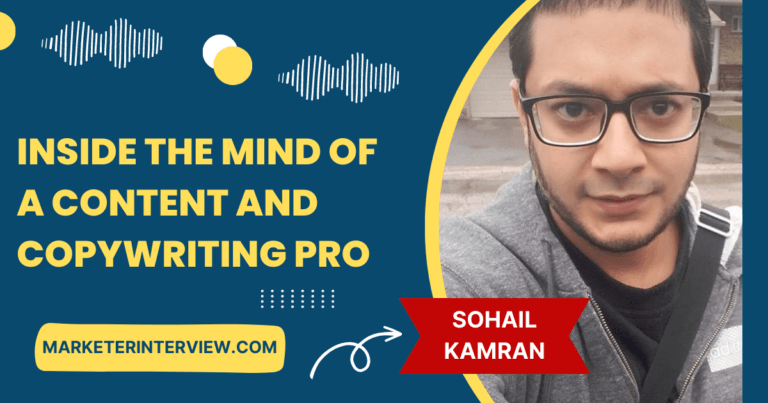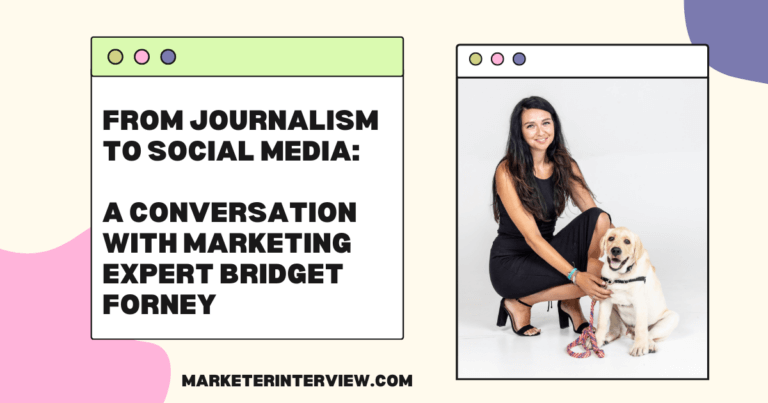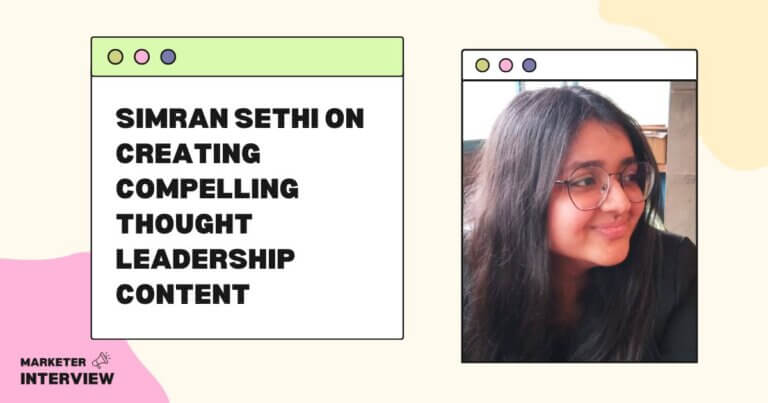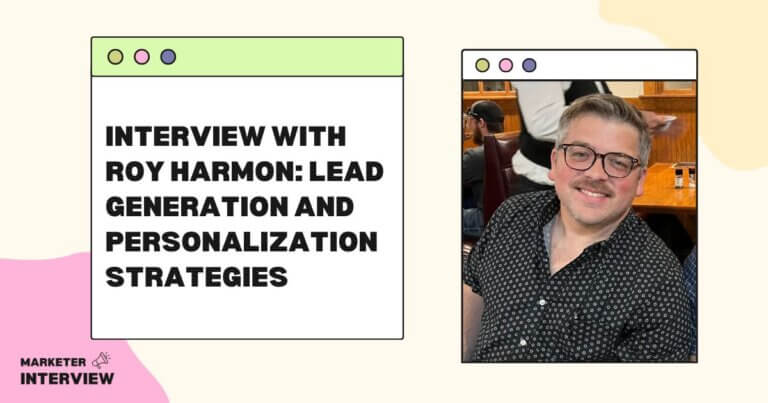Interview with Morgan Short, Director of Content and Web Strategy
In this interview, Morgan Short, the Director of Content and Web Strategy at Vendavo, speaks about her marketing journey.
Morgan discusses the importance of understanding your audience and creating purposeful content and the challenges she’s faced while working on various projects.
Morgan shares her insights on building a content strategy that aligns with your company goals and brand messaging and how being a connector is crucial to being a content strategist.
Let’s dive in!
Contents
- 1 Can you tell us about your marketing journey?
- 2 How do you ensure your content aligns with your brand’s messaging and goals?
- 3 What do you consider to be the most essential elements of a successful content marketing campaign?
- 4 Can you share a particularly challenging project you’ve worked on?
- 5 What do you think sets apart a good copywriter from a great one?
- 6 How do you stay up-to-date with the latest trends in the content and copywriting industry?
- 7 What qualities do you believe are essential for a marketing leader to possess?
- 8 How do you foster creativity and innovation among your team?
- 9 Can you tell us about a time when you had to make a difficult decision about marketing or content strategy?
- 10 What tools and software do you regularly use for your job?
Can you tell us about your marketing journey?
My marketing journey started with my love for storytelling. I’ve always been drawn to the power of words and how they can make people feel and motivate people to behave.
Not to mention, I’ve also always insisted on writing things down. Journals filled to the brims with poetry drafts, lists, stories, random business ideas, and streams of consciousness.
When I first went to college, I intended to study international business. But I sucked at Economics and Calculus. When I took my first journalism class, I felt engaged and inspired and knew I had to continue studying the power of words and the impact of mass media on human behavior.
So I switched my major and allowed myself to pursue something I was much more passionate about. I went the strategic communications route within UW-Madison’s Journalism School and thought I’d pursue advertising.
I held a couple of marketing internships before I graduated. My first role out of school was at a small, millennial-owned advertising agency in the heart of Oshkosh called Candeo Creative, an agency that has since closed its doors.
I was a Creative Strategist there, working with local companies to shape their brand stories, develop marketing strategies, and build media plans. I missed home a ton, so I looked for work in the Twin Cities.
I made the move back home and served a short stint as a Marketing and Media Manager at a company called Crew2. It was a bit more design work than I wanted so I started looking for something more focused on writing.
What they say is true: it’s often about who you know. One of my friends mentioned they knew of a marketing opportunity that was mainly writing-based, and they introduced me to Insite Software, a B2B commerce tech provider. That was my first introduction to two worlds: B2B content marketing and SaaS.
Ever since I stepped into the role at Insite in 2017, I’ve been working for tech companies doing content marketing. The tech world moves fast and I’m no stranger to acquisitions. The first acquisition I was part of happened when Insite was acquired by Episerver, and then through various additional acquisitions, Episerver became Optimizely.
I left Optimizely for a short gig at an end-to-end Customer Experience firm, Avtex Solutions. I managed the content team there and strengthened my leadership skills as part of the extended leadership marketing team.
We went through an acquisition there as well. TTEC Digital bought Avtex. Being part of acquisitions makes for unique and interesting opportunities both from a career perspective and as it pertains to content and brand storytelling.
That brings us to the present day. I was introduced to a new opportunity at Vendavo working for Mike Bernard (who happened to be CMO at Insite Software when Episerver acquired us). I’ve been here since leading our content efforts and web strategy.
It’s been a wild ride, but I’m grateful for every step of the journey that led me to where I am today.
How do you ensure your content aligns with your brand’s messaging and goals?
You must start from a company-wide perspective: What are our company goals? Who are our products for? What is our unique differentiation?
Content needs to support your company goals and be useful and informative for your target audience. So I get relentlessly focused on understanding our customers and their pain points. People can find your truest product differentiation and the heartbeat of your brand in your customers’ stories.
Once you have a clear understanding of your company goals, customers, and product differentiation, it’s time to get the content engines roaring to support.
Build a content strategy, craft a messaging architecture, train your internal subject matter experts on the key messaging points, and be an ambassador for the brand. Get the organization to understand the different purposes of content and how they can get involved in creating and promoting it.
From there, it’s all about ensuring that every piece of content we create aligns with our brand’s messaging architecture and key pillars. Whether it’s a blog post, social media post, or eBook, everything needs to support the overarching message we want to convey.
The job of a content strategist goes beyond writing and production of the content itself. It’s to be a connector. A connector of people. A connector of words to people. A connector of pain points to solutions.
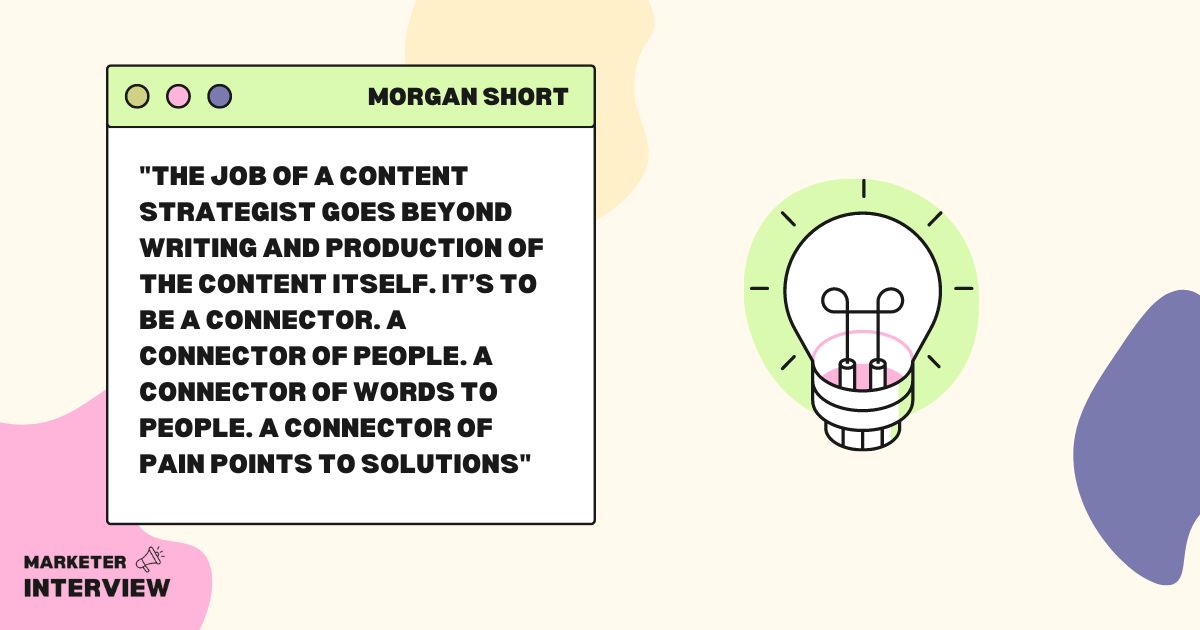
What do you consider to be the most essential elements of a successful content marketing campaign?
You need to know your audience inside and out. Understand their pain points. Understand what motivates them. Understand what they care about. Create human content that’s helpful, informative, and engaging.
I hate creating content just to create it. Quality over quantity. Content needs to be purposeful. You must understand who it’s for, what it’s intended to do, and how it differs.
Also, never create a single piece of content, hit publish, and call it done. The key to a successful content marketing campaign is to make many variations of one pillar piece (think hub and spoke) and then distribute that content across different channels.
Also, don’t just share the link. Create native content for different channels.
Each of the acquisitions I’ve been part of has had extremely challenging aspects, especially regarding content.
You must make important decisions about how the acquisition impacts your brand story and messaging architecture, whether to consolidate digital properties or rebrand content assets. Then there’s creating the content and communications around announcing the acquisition itself. But that just scratches the surface.
The good news is once you’ve been part of one acquisition, you can reuse similar playbooks to support the next ones. The key is to take your time in the strategy portion but then move fast through execution.
Ideally, as a content marketer, you’ll be pulled in early once your organization knows they’ll be making an acquisition. But you might not have as much time as you’d hoped, so having a framework is critical.
What do you think sets apart a good copywriter from a great one?
A good copywriter understands all the rules and nuances in writing/journalism. They’re consistent. They can create a strong opening, middle, and end. They’re good at infusing your brand’s voice. They generally understand your audience. And they write things that are usually enjoyable to read.
A great copywriter understands all the rules and then breaks them. They don’t just capture your attention. They demand it. They are relentless about understanding your audience.
How do you stay up-to-date with the latest trends in the content and copywriting industry?
I follow a ton of great marketing voices on LinkedIn. I’m also part of a few marketing communities. I’ve found those to be critical in my learning.
Especially as someone who has found herself as a solo content marketer in a marketing team time and time again, communities of other content marketers experiencing similar daily challenges are HUGE!
What qualities do you believe are essential for a marketing leader to possess?
Empathy. Empathy for your team. Empathy for your customers. Expressing that empathy through your actions and your words, both spoken and on paper.
My leadership style is rooted in being a solid pillar of support for my team and a soft place to fall when they’re struggling.
In addition to empathy, the most outstanding marketing leaders I know are lifelong learners, fierce creative thinkers, excellent collaborators, and great cheerleaders (of their brand, team, products, and customers).
How do you foster creativity and innovation among your team?
Fostering creativity and innovation among my team is one of my favorite parts of my job. So I’m always seeking ways to promote out-of-the-box thinking and fresh perspectives.
Whether through brainstorming sessions, team-building exercises, or a fun competition, I create spaces and environments where creativity can thrive.
Oh, also, get outside when you’re stuck. The best thinking doesn’t happen in front of a screen. Go for a walk. Get some sunshine. Throw some music on. Dance a little bit. Be silent and just breathe. Think first, do next.
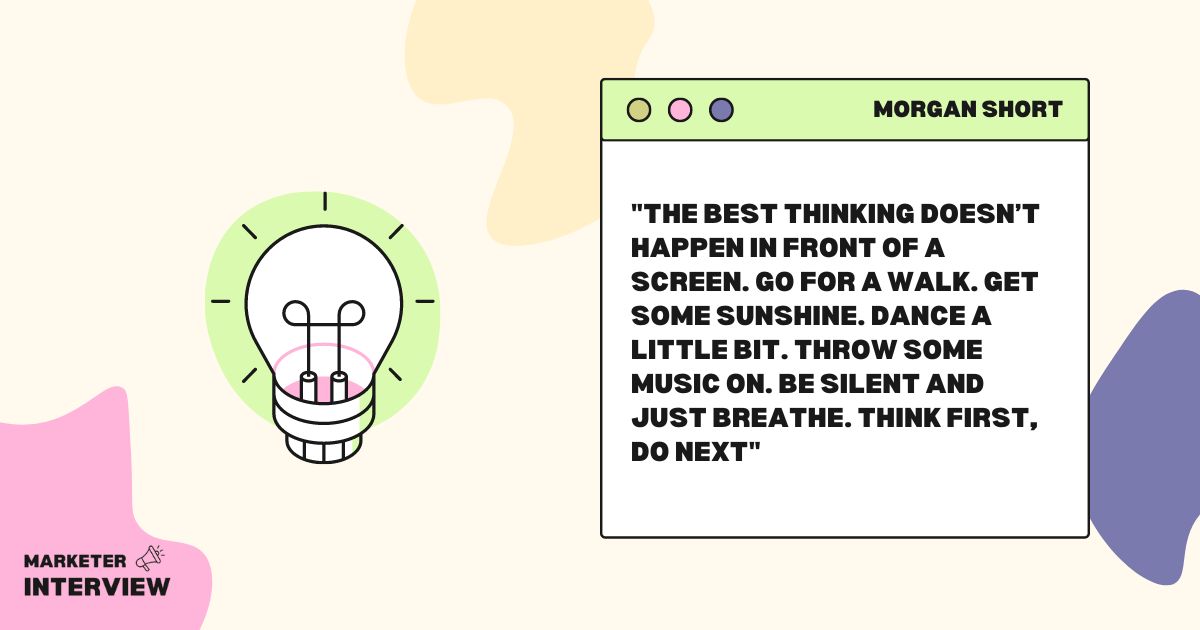
Can you tell us about a time when you had to make a difficult decision about marketing or content strategy?
This isn’t a specific example, but as the content owner, I find one of the most challenging aspects of the job is just the sheer frequency of requests.
As content owners and marketers, we all know the challenge of managing multiple requests and ideas from different corners of the organization.
We are challenged with striking a balance between hitting the right personas, supporting sales through enablement or lead generation, building product content, getting more eyes on our website, telling our customers’ stories, and having unique perspectives in our thought leadership.
It’s a lot. It often feels like every arm of the business is pulling you.
Supporting it all is easier said than done, especially when the requests keep piling up. The key is to have a clear content strategy in place that allows you to say both “yes” and “no” or “no because” or “no, not right now” to requests.
It doesn’t happen overnight, so being realistic about what we can accomplish with our resources is vital.
It’s about prioritizing and creating content that resonates with our audience and drives results. It is important to remind people that marketers are not just writers or creatives but also strategists and decision-makers. We’ve built a strategy according to our company goals, and you’ve got to respect that.
What tools and software do you regularly use for your job?
Throughout my time in content, I’ve had to wear many hats and juggle multiple tasks, from project management and team communication to SEO and content creation. As a result, I’ve used many tools to streamline my workflow and boost efficiency.
From an operations perspective, we use Asana for project management. I’ve also used Trello, Basecamp, and Wrike before. We’re a Microsoft shop, so we use Outlook for email, Teams for direct messaging, and Sharepoint for collaborating on files. Outside of my organization, I’m in a lot of communities that are housed in Slack.
I’ve used Ahrefs, SEMRush, Screaming Frog, Google Search Console, Google Trends, Google Analytics, LinkedIn Analytics, AnswerThePublic, and many others for SEO and analytics.
For actual content creation, good old Microsoft Office, essential Adobe Creative Cloud, Canva, Genial.ly, Powtoon, Wavve, and now ChatGPT and other AI tools.
For virtual events and videos, On24, GoToWebinar, Vimeo, and Loom. For social media, Hootsuite and Sprout Social.
For the website, I’ve used a variety of CMS at different organs, including WordPress, Episerver, Craft, Wix, and Squarespace. And then other tools for the website, like Drift, Wistia, etc.
While having the right tools can make a difference, it’s equally important to have the people and processes to make the most of those tools.
Simply implementing a new tool without a clear plan or understanding of how it fits into your overall strategy can be more of a hindrance than a help, creating clutter and noise.
With any new tool, it’s vital to approach onboarding with a strategic mindset, understanding how they fit into your overall process and then using them to streamline your workflow and improve your results.
Ultimately, the marketer’s skills and expertise make the most significant difference, and tools are just one part of the equation.

